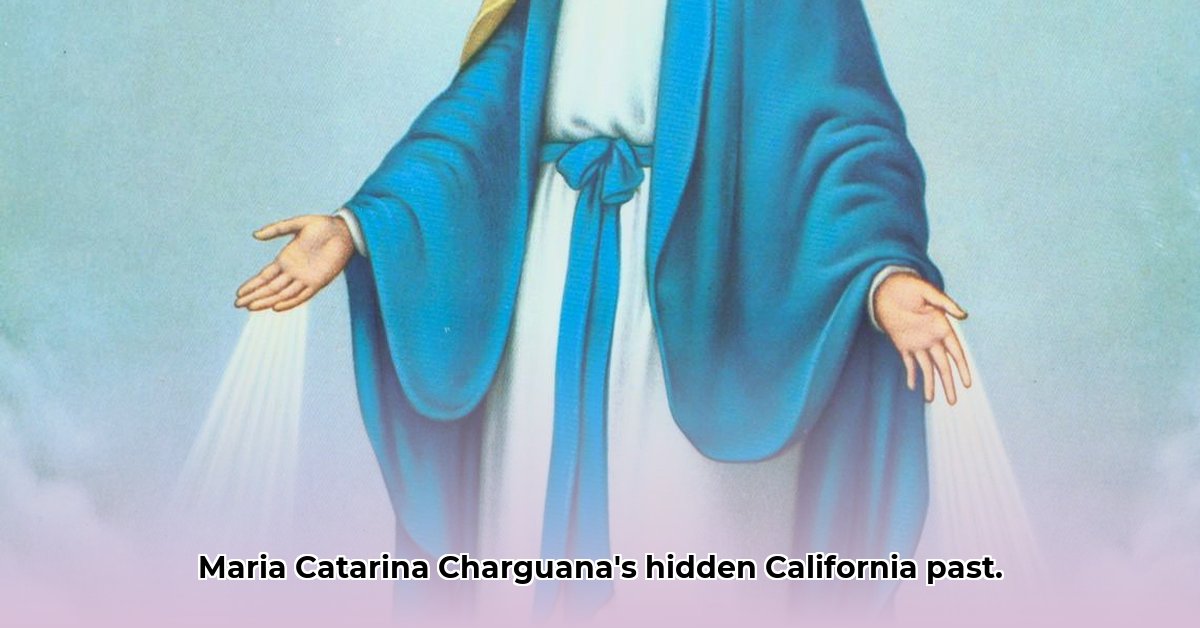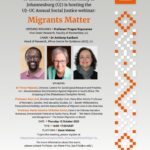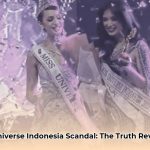Imagine California in 1848, a period brimming with transformation, gold rushes, and complex cultural interactions. Maria Catarina Charguana’s life began amidst this vibrant mix; her story presents a fascinating puzzle, one that reveals much about the era. Born to Jean Baptiste Charbonneau, son of Sacagawea, and Margarita Sobin, a Luiseño woman, she inherited a unique blend of Indigenous, French-Canadian, and Spanish influences. Unearthing the details of her life necessitates considerable detective work. This article delves into the challenges researchers face when exploring the lives of individuals from marginalized communities, particularly women whose stories often remain untold. We will examine the identity of Maria’s mother, Margarita Sobin, and how her story illuminates the experiences of Indigenous women during that era. For a deeper dive into her life, see Maria’s full story. Embark on a journey into a real California mystery, filled with clues, potential dead ends, and the ongoing efforts to piece together a more complete picture.
Uncovering Maria Catarina Charguana’s 1848 California Story: A Life Shrouded in Mystery and California History
Maria Catarina Charguana was born on May 4, 1848, at Mission San Fernando Rey de España. Her birth represented a cultural crossroads – a convergence of Indigenous Luiseño, French-Canadian, and Spanish influences. Yet, easily accessible information seemingly ends there, leaving the rest of her life shrouded in mystery. Where did she reside? What path did she take? Did she establish a family and leave descendants? These unanswered questions echo through time, creating a trail that quickly turns cold, leaving researchers facing numerous unanswered questions. The complexities of California genealogy become strikingly evident as the search for Maria Catarina unfolds.
Her parents, Jean Baptiste Charbonneau (Sacagawea’s son) and Margarita Sobin (a Luiseño woman), contribute another layer to this intriguing narrative. Details about their relationship remain scarce. Was their union formally recognized by the church or government? The surname “Charguana” itself presents a puzzle – potentially a maternal surname reflecting a complex family history. The scarcity of records, a pervasive issue when studying marginalized individuals from this period, especially women, makes reconstructing her story both challenging and deeply captivating.
The Enigmatic Search for Maria Catarina
What transpired in Maria Catarina’s life after her birth? This question marks the central mystery. The historical record, frustratingly silent about her adult life, prompts inquiries into whether she married, if she had children to perpetuate her legacy, and what impact the transition from Mexican to American rule had on her life and her community. Diligent researchers aspire to unravel these mysteries, piece by piece.
This challenge extends beyond Maria Catarina’s individual experience, reflecting a broader issue encountered when researching the lives of women, particularly those from historically marginalized communities in the 19th century. The information vacuum does not signify a lack of importance but rather underscores biases that have shaped how history has been recorded and preserved. It serves as a potent reminder of the hurdles involved in recovering narratives of those whose voices have not been amplified and traditionally preserved. Some historians suggest that this silence reflects a form of unintentional or intentional marginalization.
Genealogical and Historical Clues to Cracking the Case: A Multi-Part Plan
Uncovering Maria Catarina’s story necessitates a detailed, multifaceted investigation incorporating both genealogical and historical research. Every possible avenue must be carefully explored:
1. Genealogical Sleuthing: Meticulously examine family trees, seeking birth, marriage, and death records – if they exist and can be located. Exploring the potential of DNA analysis from living relatives could provide valuable clues, offering insights that traditional records might lack.
2. Archival Digging: Scrutinize mission records, census data, land deeds, and other primary sources from the era for potential clues. Local libraries, historical societies, and church archives are potential repositories of hidden information about her Luiseño ancestry and broader family connections.
3. Listening to Oral Histories: Engaging with Luiseño communities is crucial. Oral traditions may contain unwritten information, filling gaps in the historical record. Family stories passed down through generations may offer invaluable insights into the lives and experiences of Margarita Sobin and her descendants.
4. Comparative Analysis: Carefully examine all available documents for inconsistencies or hidden details. Even seemingly minor differences in wording or phrasing can reveal deeper meanings or contradictory accounts that need careful resolution and contextualization.
The Bigger Picture: Uncovering Untold Stories
Maria Catarina’s story symbolizes a larger struggle: recovering the histories of marginalized individuals. Her story highlights the systemic biases reflected in historical record-keeping, emphasizing the need for a multidisciplinary approach to understanding the past. Her life, whatever it contained, warrants being revealed and understood within its historical context. Her full story would not only serve as a personal biography but would enrich our understanding of California’s history and the experiences of its often-overlooked inhabitants.
Information scarcity underscores the urgent need for collaboration in historical research, particularly when focusing on marginalized individuals whose voices have been historically silenced or ignored. This endeavor extends beyond solving a historical puzzle; it involves giving a voice to the unheard and ensuring that future generations have access to a more comprehensive and accurate understanding of California’s complex and multifaceted past. Further research could potentially unveil evidence related to any potential community involvement or notable events that Maria Catarina may have experienced or participated in. Until then, the search perseveres, fueled by a commitment to uncovering the truth.
How to Trace Margarita Sobin’s Luiseño Lineage in 19th Century California
Key Takeaways:
- Maria Catarina Charguana’s birth in 1848 at Mission San Fernando Rey de España represents a fascinating blend of Luiseño, French-Canadian, and Spanish heritage, adding significant context to California genealogy and cultural history.
- Tracing her lineage presents unique challenges due to the limited documentation available on Indigenous women during this period, which directly impacts our broader understanding of California family history and cultural diversity.
- Researching Margarita Sobin’s Luiseño heritage requires exploring multiple historical sources, including mission records, census data, and Luiseño oral traditions, demonstrating the inherent complexities and rewards of in-depth historical investigations.
- Collaboration with Luiseño communities is crucial for gaining a more comprehensive understanding of Margarita’s ancestry and the historical context of her life, emphasizing the importance of including indigenous voices and perspectives in historical research.
A Daughter of Two Worlds and the Impact of California’s Transformation
Maria Catarina Charguana’s life began in 1848, a transformative year for California. Born at Mission San Fernando Rey de España, she was the daughter of Jean Baptiste Charbonneau, Sacagawea’s son, and Margarita Sobin, making her a captivating subject for historical investigation. How do we uncover more details of her life, particularly her mother’s heritage and its contribution to Maria Catarina’s cultural identity? That’s where the real investigation begins. Did the dynamic societal shifts brought about by the transition from Mexican to American rule significantly impact her upbringing and shape her worldview?
The Puzzle of Margarita Sobin and the Search for Historical Records
The biggest challenge in understanding Maria Catarina’s ancestry lies in piecing together the details of Margarita Sobin’s life. How can we effectively trace Margarita Sobin’s Luiseño lineage in 19th-century California? This isn’t a simple question that yields easy answers. Records for Indigenous women of this era are often incomplete or simply nonexistent in traditional archives. We have her name, the year of Maria Catarina’s birth, and the location. But her specific tribal affiliation, details about her extended family, and even the full details of her relationship with Jean Baptiste Charbonneau remain largely elusive. Why were women from marginalized communities often excluded from historical documentation, and what can this tell us about the historical biases and power structures of the time?
Where to Begin Your Search for Genealogical and Historical Facts
Researching Margarita’s Luiseño heritage requires a multi-pronged approach that combines traditional genealogical methods with community-based research.
- Mission Records: Begin with a meticulous examination of the Mission San Fernando Rey de España archives. Census records, baptismal records, marriage records (if any), and other documents might offer valuable clues about Margarita’s family, potentially revealing her tribal affiliation and connections to other Indigenous families in the region. However, this is a starting point, not a guaranteed solution, as many mission records are incomplete or poorly organized, reflecting the historical challenges of working with incomplete and potentially biased data.
- Census Data: While not always reliable, the 19th-century US censuses and earlier Mexican censuses offer a potentially valuable glimpse into the lives of individuals. Searching for Margarita, noting variations in spelling, is crucial. However, don’t expect a complete or entirely accurate family tree. Why is census data often considered unreliable for marginalized communities, and how can we mitigate this unreliability by cross-referencing with other sources?
- Oral Histories: Perhaps the most promising avenue for discovering how to trace Margarita Sobin’s Luiseño lineage in 19th century California involves direct and respectful engagement with the Luiseño community. Oral traditions and family histories, passed down through generations, could hold invaluable information about Margarita Sobin and her family. Collaboration with Luiseño tribal authorities and elders is paramount. This approach requires patience, cultural sensitivity, and a genuine commitment to building respectful relationships. It’s not just about extracting facts but about fostering trust and understanding, demonstrating how indigenous histories offer invaluable insights into the past.
Obstacles, Opportunities, and a Better Understanding of Cultural Influences
The path to understanding
- Unlocking Evie McGee’s Parents:A Deep Dive into Evelyn Colbert’s Success - July 25, 2025
- Discover Evie in Rosie’s Rules: A Complete Character Guide - July 25, 2025
- Evelyn McGee Colbert Family: 30 Years of Success and Love - July 25, 2025
















